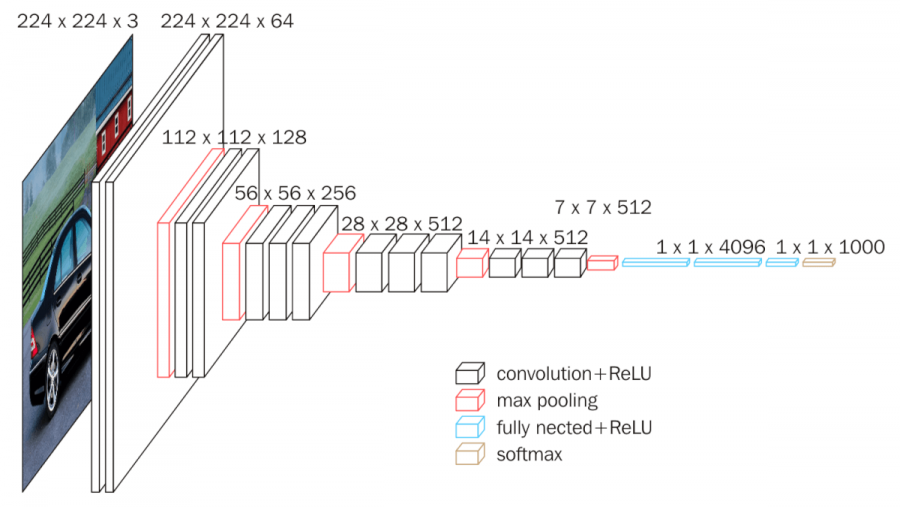Introduction
In the world of deep learning and computer vision, convolutional neural networks (CNNs) have played a transformative role. Among the most notable CNN architectures are VGG and LeNet-5, each representing a milestone in the evolution of deep learning. LeNet-5, introduced by Yann LeCun in 1998, marked the beginning of CNNs for digit recognition tasks, while VGG, developed by the Visual Geometry Group at the University of Oxford in 2014, showcased the power of deep architectures for large-scale image classification. This article explores the key differences between VGG and LeNet-5 and highlights their real-world applications.
LeNet-5: A Pioneer in CNNs
LeNet-5 is a landmark in the history of deep learning. Designed primarily for digit recognition tasks, such as reading handwritten digits for postal code recognition, LeNet-5 consists of a simple yet effective architecture.
Key Features of LeNet-5
- Architecture:
- Composed of seven layers, including convolutional, subsampling (pooling), and fully connected layers.
- The input size is fixed at, suitable for grayscale images.
- Activation Function:
- Uses sigmoid or tanh activation functions.
- Efficiency:
- Minimal computational resources are required due to the simplicity of the architecture.
- Primary Focus:
- Optimized for small datasets and tasks involving low-resolution images.
Advantages
- Computationally lightweight, making it suitable for early hardware.
- Demonstrated the feasibility of gradient-based learning for CNNs.
Limitations
- Limited depth, restricting its capacity to learn complex features.
- Not suitable for high-resolution or large-scale image datasets.
VGG: Deep and Powerful
VGG, introduced as part of the ImageNet Large Scale Visual Recognition Challenge (ILSVRC) in 2014, is known for its simplicity and depth. The VGG architecture, especially VGG16 and VGG19, uses a uniform structure with a focus on increasing depth while maintaining simplicity in design.
Key Features of VGG
- Architecture:
- Composed of 16 or 19 layers (depending on the variant), with a combination of convolutional and fully connected layers.
- Uses convolution filters and max pooling layers, ensuring consistency across the network.
- Accepts RGB images with an input size of.
- Activation Function:
- Employs ReLU (Rectified Linear Unit) activation for faster convergence.
- Scalability:
- Designed to handle large-scale datasets like ImageNet.
Advantages
- High depth enables learning of complex and hierarchical features.
- Consistent architecture simplifies implementation and analysis.
Limitations
- Computationally expensive, requiring substantial memory and processing power.
- Slower training times compared to simpler architectures.
Key Differences Between LeNet-5 and VGG
| Feature | LeNet-5 | VGG |
|---|---|---|
| Year of Release | 1998 | 2014 |
| Depth | 7 layers | 16 or 19 layers |
| Input Size | (grayscale) | (RGB) |
| Filter Size | Varied (e.g., ) | Uniform |
| Activation | Sigmoid/Tanh | ReLU |
| Primary Use Case | Handwritten digit recognition | Large-scale image classification |
| Computational Cost | Low | High |
| Real-World Impact | Early-stage tasks with low resources | High-performance tasks requiring depth |
Real-World Applications
Applications of LeNet-5
- Digit Recognition:
- Used for postal systems, such as ZIP code digit recognition.
- Small-Scale Image Classification:
- Suitable for tasks involving limited datasets and simple patterns.
- Embedded Systems:
- Ideal for lightweight applications due to its low computational cost.

Applications of VGG
- Image Classification:
- Achieved top performance in ImageNet, a benchmark for large-scale image recognition.
- Feature Extraction:
- Frequently used as a feature extractor in transfer learning for various tasks like object detection and segmentation.
- Medical Imaging:
- Utilized in diagnosing diseases through high-resolution medical scans.
- Autonomous Vehicles:
- Integrated for recognizing road signs, pedestrians, and other critical features.
Evolutionary Significance
LeNet-5 and VGG represent two eras in the development of CNNs. LeNet-5 laid the foundation, introducing concepts like convolutional and pooling layers. In contrast, VGG demonstrated the power of depth in achieving state-of-the-art performance, paving the way for modern architectures like ResNet and EfficientNet.
Conclusion
LeNet-5 and VGG are cornerstones in the history of convolutional neural networks. While LeNet-5 represents simplicity and efficiency, VGG emphasizes depth and scalability. Understanding their differences and applications highlights the evolution of CNN architectures and their impact on diverse fields. As technology advances, these architectures continue to inspire and shape the future of deep learning.
